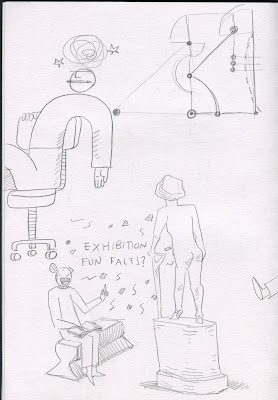Robert Rauschenberg's and Ray Johnson's collage are the main inspiration for the animation aesthetic. Their works strongly reflect popular culture and current issues at that time through collaged images obtained from printed publications from the 1960s-70s. Therefore, appropriate for an adaptation of The Atrocity Exhibition which are based off Ballard's observation of the media culture in that period.
Our animation will be a video collage in 4:3 TV format consisting of still images and free copyright videos. Each scenes will be in mix media (collage, oil pastels, paper rips, acrylic paints and mono-printed textures, film-scratching), digitally assembled with videos to create a vivid atmospheric experience of the main character going insane due to media saturation.
 |
| Robert Rauschenberg |
 |
| Ray Johnson |
 |
| Ray Johnson |
These are my initial experiments with composition and media taken from separate short narratives in the book.
Some parts of the books has a narrative, thus are better told with a series of sequential images.
We think this one is a bit too busy if it were to be animated.
 |
| Waterworld 1 |
Tom and I liked the use of blue and red in these two. We think this could be the dominant colour for parts of the animation done in acrylic paint.
 |
| Waterworld 2 |
 |
| Waterworld 3 |
I combined an abstract cutout composition with digital collage of images from the internet.
 |
| A Mathematical Confusion |
I tried to do 3-colour screen print with this illustration to test out the crispness of the half-toned images in the screen printed outcomes. We are quite pleased with the result as it is not too grainy.
(insert screenprint image)
I made the illustrations clearer by creating distinction between foreground and background.
 |
| Intersecting Planes |
 |
| A Scenario of Conceptual Orgasm |
 |
| Biomorphic Horror |





















